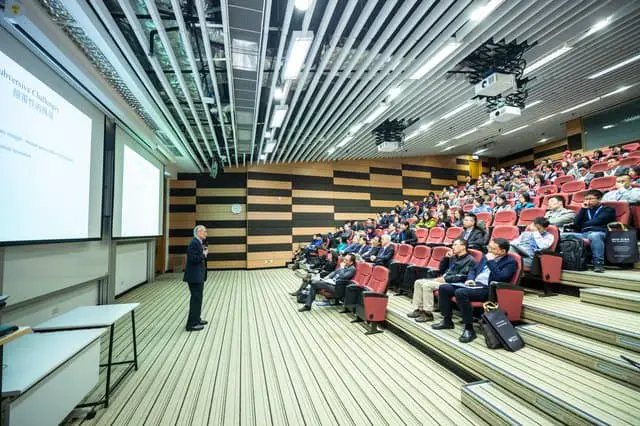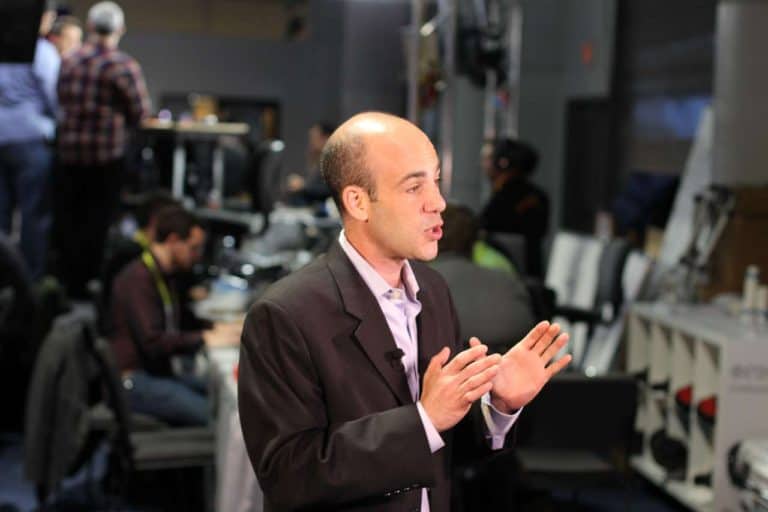Group Presentations: 7 Tips for Presenting With a Group
Presenting as a team is a complex exercise that requires diplomacy, respect, and many human qualities. A group team is composed of individuals where each one has a character and history.
The role of the leader within it is decisive. Each team member must feel in their place and work not only for their own interests but also for a common goal; they must adhere to values to succeed in the work.
Working alone is an opportunity that requires discipline; however, working as a group requires twice of it; all members must be aware of their limitations so that they do not hold them back.
Group Presentations: 7 Tips for Presenting With a Group
1. Set a Criteria to select the members
Choose your partners and form a balanced group of up to four people, with about the same level, to avoid wasting time on adjustments. Don’t forget to cross-check experiences and personalities so that everyone can help and be helped in turn.
Do not choose only close friends, and surround yourself with motivated and serious people who know each other a minimum.
2. BE ORGANIZED!
Be clear about the work objectives and how they are distributed. Similarly, give yourself a time limit. Each person must ensure that they have a clear understanding of their missions and what role the group expects from them.
Assign individual tasks based on their skills. Also, set meeting rules to improve efficiency, such as turning off laptops, taking notes, scheduling, preparing for meetings, etc.
For successful group presentation, each team member needs to know their role and what they can bring; the objectives to be achieved must therefore be clearly defined, precisely defined, and must, of course, be achievable. Having common objectives clearly stated and well understood helps increase motivation and build a strong team spirit.
But the ultimate goal of the project towards which teamwork must aim may sometimes seem distant and less concrete. In this case, it is crucial to define steps to be achieved gradually, with always clear and precise goals.
3. Outstanding performance is linked to a great leader.
The leader holds an essential role, and it can be a demanding one since he must be firm without being authoritarian. Within the team, he defines the objectives and sets the limits for the smooth functioning of the group.
The leader ensures the project as all tasks are distributed between all teammates; a fantastic group also clarifies mutual respect’s needs and boundaries.
Excellent teamwork and leadership ensure outstanding performance because work can be a source of conflict, and the team can go through tensions. However, in a project, the group’s cohesion and teamwork often make a difference.
4. Communication: the key to performance
Communication and teamwork are inseparable; internal communication is one of the basic rules of cooperation. Once again, everyone needs to know what their mission and objectives are.
This makes it easier to help solve a potential problem or to know who to ask for help when needed.
It is essential to listen to others and not make judgments. Everyone works and thinks differently, even if the team uses standard tools and references.
By knowing how to listen, it is possible to learn from others and find together the best solution to achieve the goal. So don’t just focus on how you would have done this or that and consider all the ideas, even the craziest sometimes.
5. Start with individual work
As soon as you find out what the subject of the presentation is, it is appropriate to start with individual work; this lends itself, for example, to the reading of texts to be discussed by the group. Unique work upstream is a fundamental principle of collaborative learning.
This allows intense exchanges in the group because each student can bring the result of an individual’s work and reflection.
Group work is particularly effective when group members have worked previously on documents that complement each other. The group work then begins with a debriefing of participants.
Mutual listening, cooperation, and integration of all take place spontaneously and without a long start-up time.
6. Set a time to deliberate with your group
Group work is less rentable if time is too short; groups need time to organize their work, interact and prepare their presentation. Time certainly decreases with routine practice, but it is essential when groups are formed randomly.
A reasonable minimum time is obtained by multiplying the time by the number of participants. Groups of three should have at least 9 minutes available.
7. Prioritize rehearsal presentations
One of the key challenges in group presentations is time management and especially getting from the planning, arguing, and brainstorming phase to the presentation rehearsal phase. It is helpful to indicate to the group, before the end of the operational phase, how much time it has left before the big day.
-
Want to Stand Out? 15 Key Tips for an Awesome Presentation

Presentation skills are often taken for granted, and developing and practicing these skills will give you a huge advantage. There is nothing less engaging than a dispassionate speaker flipping through slides for a set amount of time. To stand out, follow these key steps and turn an okay presentation into an awesome one! The fifteen…
-
11 Best Body Language Tips For Engaging Presentations (#11 is Underrated)

Growing up, we were always taught how we should have manners while talking to others and that there were some things we could not do in front of people like sprawling or even putting our elbows on the table while eating because it was rude. In the examples above, the rudeness comes from gestures, not…
-
10 Public Speaking Tips for First-Timers

Are you looking for amazing, easy-to-follow public speaking tips for first-timers? Perhaps you have an interview coming up, or an academic presentation or, a business topic to present to your audience. Going up on a stage for the very first time can be somewhat tension-filled. My First Time Speaking in public Experience I did some…
Conclusion
Presenting in-group makes it possible to confront ideas. Teamwork also helps to foster the development of team skills, limit risks in the event of absence, and develop collective intelligence.
Reference and Further Reading
AcethePresentation. AmadeBai, Emidio. 14 Types of Speech and Easy Tips to Master Them.
AcethePresentation. AmadeBai, Emidio. What Makes A Bad Public Speaker? Top 10 Worst Traits To Avoid
JUPILLE, Rémy. Business Secrets Podcast.







